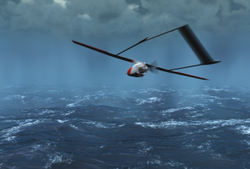
Anyone who has followed the wars in Iraq or Afghanistan has heard about the use of Unmanned Aerial Vehicles (UAV). These are essentially remote control airplanes capable of performing a number of tasks from surveillance to actually carrying weapons.
NASA and NOAA have over the last year been experimenting with a small UAV from Aerosonde, an Australian manufacturer. NOAA currently uses manned hurricane hunter aircraft (WP-3D Orion and Gulfstream IVs) to take measurements from inside and immediately surrounding hurricanes. This data is essential to not only predicting hurricane paths and guaging the storms’ strength but also to learning more about them.
These new UAVs offer many advantages over the traditional, manned hurricane hunter aircraft. For one, they can fly at much lower altitudes into the storms without endangering human lives. Further, they can be called into service on much shorter notice than a manned crew and remain on station around a storm for longer periods of time. In November of 2007 NOAA sent an Aerosonde UAV into Hurricane Noel and the unit was airborne for over 17 hours and collected more than seven hours worth of data.
The technology has many applications within NOAA’s mission of monitoring our globe. In addition to hurricane hunting, UAVs can be used to monitor ice flows, wildfires, severe weather, animal life and much more. The program is really just getting started and funding is minimal in comparison to the military equivalent but the applications are very promising. Maybe a tornado hunter is next!
Here’s a video from Aerosonde discussing the potential applications.
